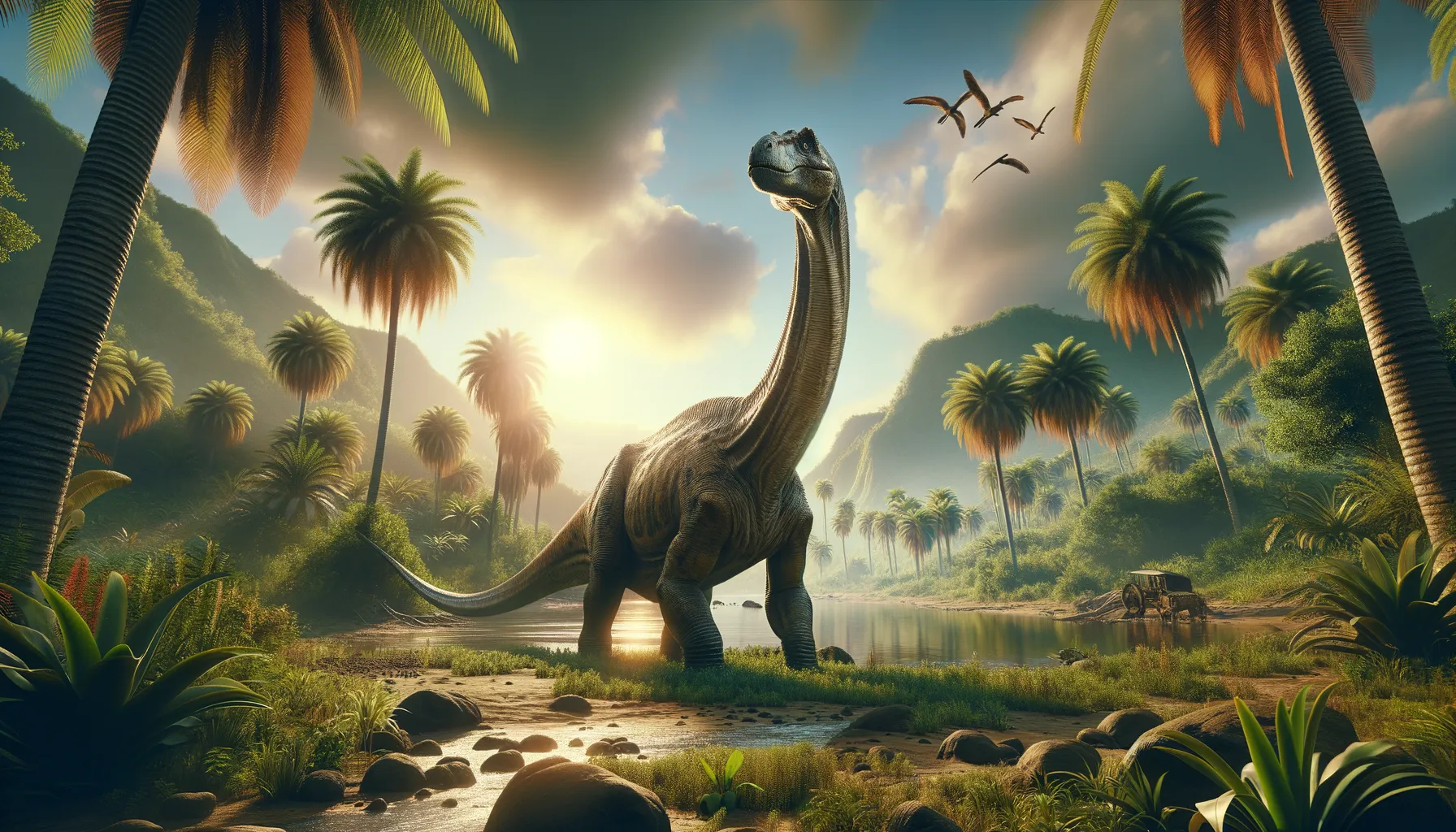
Aegyptosaurus
Giant of the ancient African landscape.
Period
Cretaceous
Length
About 15 meters long from head to tail.
Height
Stood around 4 meters tall at the shoulders.
Weight
Weighed approximately 10 tons.
Aegyptosaurus was a large sauropod dinosaur that roamed the Earth during the Cretaceous period. Known primarily from fossil discoveries in northern Africa, it was a part of the diverse ecosystem of that time. Like many of its sauropod relatives, Aegyptosaurus had a long neck, which it likely used to reach high or distant vegetation. This gentle giant lived in what would have been lush, river-fed environments, coexisting with numerous other dinosaur species.
Diet
Aegyptosaurus was an herbivore, primarily feeding on the abundant plant life available in its environment. Its long neck allowed it to reach vegetation both high in trees and close to the ground.
Hunting
As a herbivore, Aegyptosaurus did not hunt for food. Instead, it likely spent much of its time grazing or browsing for plants. This dinosaur would have required a vast amount of vegetation to sustain its massive body.
Environmental challenges
Aegyptosaurus faced challenges such as fluctuations in climate, which could have impacted its food supply. Predators, including large theropods, posed a potential threat, especially to juvenile individuals. Additionally, the changing landscape, such as river paths and forest density, would have influenced their movement and access to resources.
Speed
Relatively slow mover due to its large size.
Lifespan
Estimated to be around 70 to 80 years.
First discovery
Discovered by Ernst Stromer in Egypt in 1932.
Fun Facts
- Aegyptosaurus was a massive plant-eating dinosaur that lived about 95 million years ago during the Cretaceous period.
- Its name, Aegyptosaurus, means 'Egyptian lizard' because its fossils were first discovered in Egypt in the early 20th century.
- This dinosaur was a sauropod, which means it had a long neck and tail with a massive body, resembling the more famous Brachiosaurus.
- Aegyptosaurus likely roamed what is now the Sahara Desert, which back then was a lush, green region teeming with life.
- It is estimated that Aegyptosaurus could reach lengths of up to 49 feet, making it one of the larger dinosaurs of its time.
- Fossils of Aegyptosaurus have also been found in other parts of Africa like Niger and Libya, hinting at its wide range.
- The discovery of Aegyptosaurus fossils has helped paleontologists understand the ecosystems of ancient Africa and how dinosaurs lived there.
Growth and Development
Aegyptosaurus, like other sauropods, likely experienced rapid growth during its early years. Juveniles would have been considerably smaller and more vulnerable, requiring them to grow quickly to reduce predation risks. The development of its gigantic body size was a key factor in reaching maturity and reproductive success.
Habitat
This dinosaur inhabited prehistoric floodplains and river valleys, where water was plentiful and vegetation abundant. These areas provided ideal conditions for supporting large herbivores. The environment was likely diverse, with a mix of forests and open landscapes, allowing Aegyptosaurus ample space to move and graze.
Interaction with other species
Aegyptosaurus coexisted with various other dinosaur species, both herbivorous and carnivorous. While they would have competed with other herbivores for food, their sheer size provided a certain degree of protection. Predator interactions likely involved the larger carnivores of the region that could threaten their young.
Natural lifespan
Aegyptosaurus could live up to 80 years in the wild.
Reproduction
Aegyptosaurus, like other sauropods, likely laid eggs. These eggs would have been laid in clutches in safe nesting sites, perhaps in sandy or soil-covered areas to avoid detection by predators. The young would hatch fully independent, with minimal parental care.
Social behaviour
Aegyptosaurus might have exhibited some social behavior, potentially moving in groups for protection against predators. These groups would have allowed them to better locate food and migrate during environmental changes. However, larger individuals could have also lived solitary lives.
Fossil locations
Fossils of Aegyptosaurus have been found in the Sahara Desert, within the borders of modern-day Egypt. These discoveries consist mainly of fragmentary remains such as vertebrae and limb bones. Despite the incomplete nature, they provided valuable insight into the dinosaur's size and environments.
